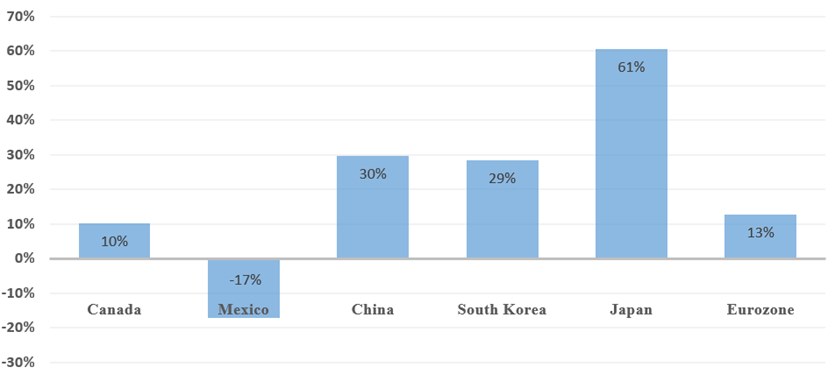By Meaghan Anderson
With the quick planting that happened the week of April 22-26 and the lack of field activity since due to high winds and rain, some fields may have crops emerging that have had no preemergence herbicide. While some herbicides can be applied prior to or after crop emergence, many have restrictions related to applications when crops have emerged. This could mean applicators need to change carrier, adjuvants, or herbicide to avoid crop injury. Consider the following prior to spraying any fields that were planted ahead of the rains.
Scout every field prior to spraying
Growing degree days (GDDs) have accumulated relatively quickly, but there is always variability in crop development from one field to another. Since Wednesday, April 24, GDD accumulation is very near or past the approximate 90-120 GDDs required for corn emergence. Soybeans generally require a similar number of GDDs to emerge, but there is typically more plant-to-plant variability across fields. While one field may have no visible emergence, other fields may be further along due to soil type, landscape position, soil moisture, or surface residue. Investigating how close the corn or soybean plants are to emerging is critical to making informed decisions.

Keep in mind that even crops very near emergence can be injured by some preemergence applications. Soybean plants often create a crack in the planted row prior to emergence. Any condition that allows for concentrated herbicide to directly contact plant tissue (like washing into an open furrow) may result in substantial injury.
In addition to checking for crop emergence, look closely to see if small weed seedlings are emerging as well. Agronomists have noted emergence of many common species in fields not yet treated with herbicides, including morningglories, foxtails, woolly cupgrass, ragweeds, velvetleaf, lambsquarter, and waterhemp.
Check herbicide labels for application restrictions related to emerged crops
Applicators need to carefully read herbicide labels to determine if products in the planned preemergence application can be applied near or after emergence.
Most soybean preemergence herbicides, particularly ones containing sulfentrazone, metribuzin, or flumioxazin, have explicit statements on the label regarding preemergence applications. None of these herbicides should be applied to soybeans that are emerging. For example, the Kyber herbicide label notes “severe injury will occur if Kyber is applied when soybeans have begun to crack” and “preemergence application of Kyber must be made within 3 days after planting and prior to soybean emergence.”
Most corn preemergence herbicides allow for more flexibility, though some have restrictions on growth stage, adjuvants, or carrier when the application is made after the crop has emerged. Some corn herbicides, like TriVolt, allow postemergence applications during a short window – spiking to the 2-leaf collar (V2) growth stage. While crop oil concentrates (COC) and methylated seed oils (MSO) may be recommended for certain preemergence herbicide applications to control emerged weeds, these may not be recommended once the crop has emerged due to likelihood of crop injury.
It is common for a portion of corn’s nitrogen needs to come from a UAN carrier with preemergence herbicide applications. Herbicide labels vary in their restrictions related to UAN use as a carrier when applied to emerged corn. While some labels simply recommend against using UAN as a carrier, others explicitly prohibit it. Emerged corn exposed to UAN will experience foliar burn, similar to that of a contact herbicide. You can read more about UAN as a herbicide carrier on emerged corn in this article.
Change your plans
I realize that many farmers have significant fieldwork to complete once soils dry out, but the risk to the crop is significantly less if time is taken scout fields, check herbicide labels, and adjust plans if necessary. These adjustments may mean using alternative herbicides due to risk to the crop, changing the carrier or adjuvant, or even adding a different product to control emerged weeds. Reach out to your local field agronomist if you have questions or need assistance with managing weeds this spring.
Source : iastate.edu